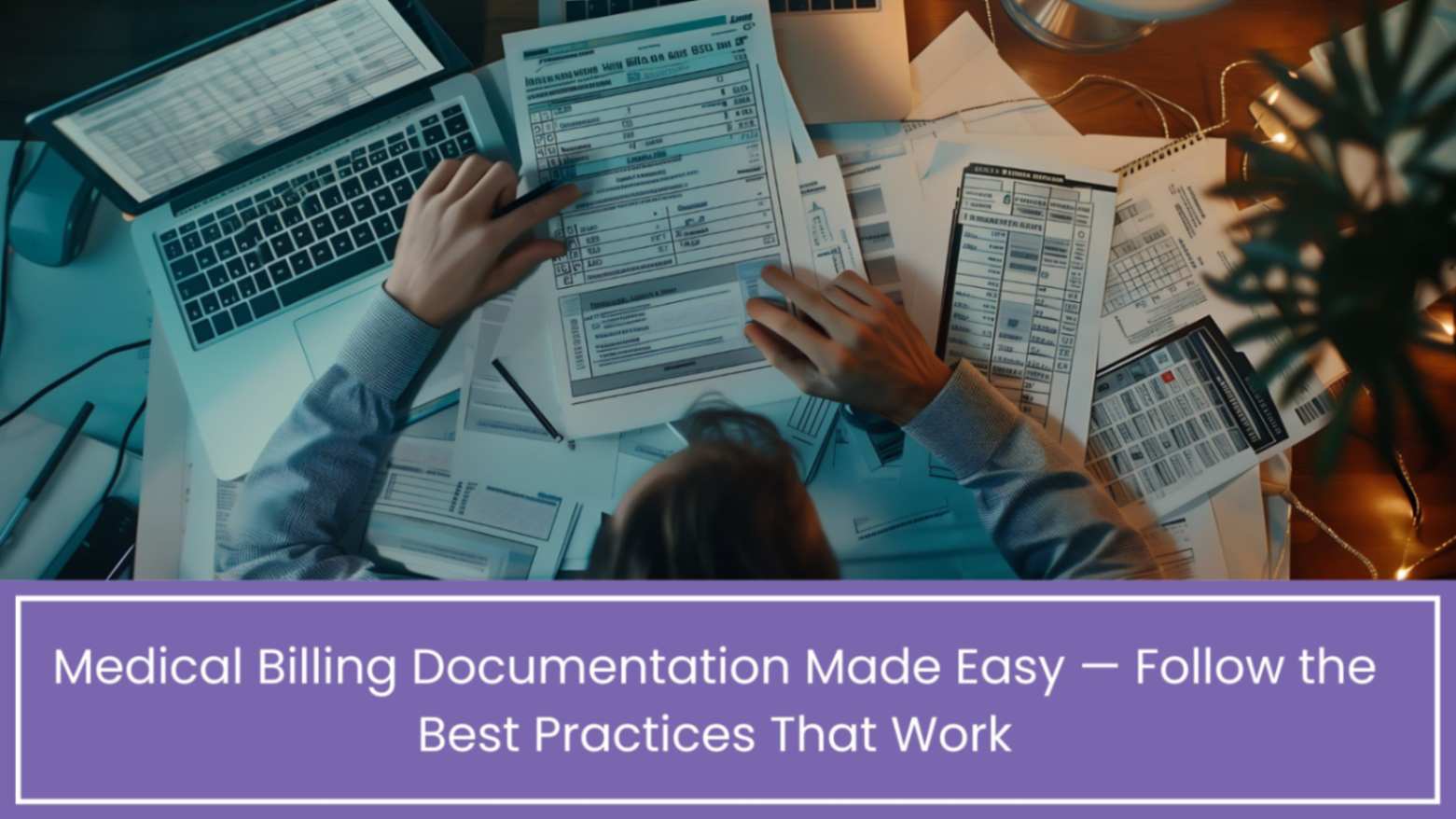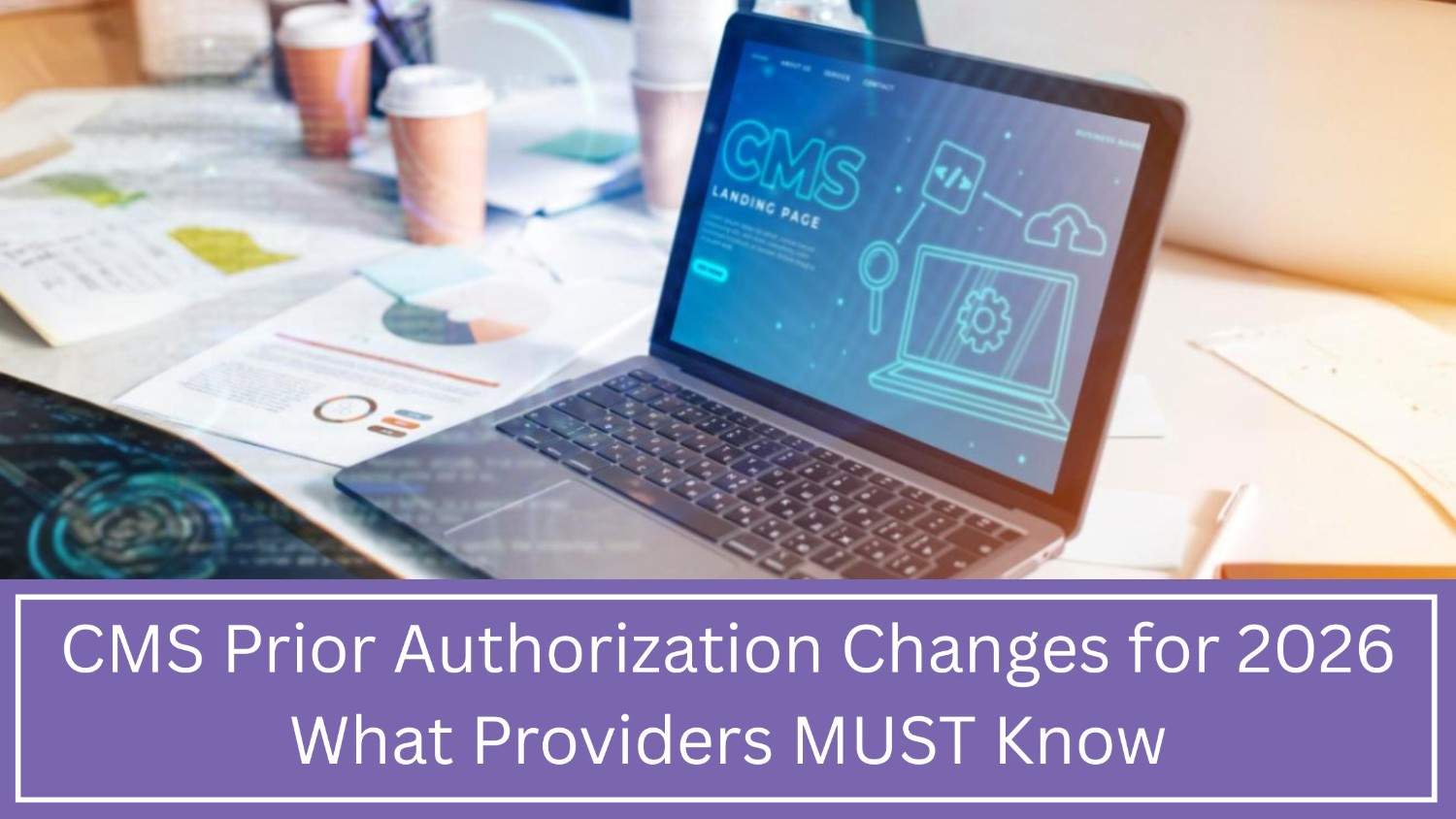AI Medical Coding The Future of RCM in 2026
AI Medical Coding The Future of RCM in 2026 — The complexity of medical coding keeps climbing as payer rules shift, paperwork grows, and manual processes slow teams down. AI-assisted coding accelerates workflows, catches errors early, and produces cleaner claims. This piece explores how AI will dominate coding by 2026, real results from today’s tools, accuracy concerns, and the financial gains driving this shift. Discover how automation reduces denials, sharpens accuracy, and speeds up cash flow.
Table of Contents
The Future of Medical Coding: How AI-Assisted Tools Will Transform RCM by 2026
Medical coding creates billing headaches. Each patient’s care needs exact codes for insurer payments. Healthcare grows tougher, and insurer rules shift, making timely updates challenging even for skilled coders.
AI-driven medical coding is a smart move—it combines tech and staff skills to upgrade claims handling. By 2026, AI will manage over 70% of coding jobs, making work faster and cutting mistakes.
This shift supports coders: Better tools reduce payment rejections, speed up cash flow, and firm up earnings cycles.
Why the Current Medical Coding System Needs a Change
Medical coding matters for getting bills paid right. Mistakes cost you: One in four claims gets denied, hurting profits and risking fines. Manual work slows payments and stresses your team.
The old coding struggles:
- Endless payer rule changes.
- Slow record reviews and typing.
- Too many repeat tasks.
- Late claims and payments.
Healthcare needs smart fixes—AI delivers them.
The Rise of AI-Assisted Coding
AI-assisted coding optimizes medical billing through smart tech for faster access to patient records.
Why businesses benefit:
Record Scanning: Reads doctor notes, test results, and charts.
Quick Codes: Spot keywords to suggest billing codes like CPT or ICD-10.
Rule Check: Verifies codes match insurer requirements.
Adaptive Learning: As coders correct errors, it adapts and becomes smarter.
This collaboration streamlines billing workflows, reduces errors, and boosts revenue.
Current Trends in AI-Driven Medical Coding (2024–2026)
AI in RCM is projected to grow faster between 2024 and 2026. Key shifts that drive this include:
1. Smart Document Reading
AI uses language understanding to quickly scan medical notes. It spots procedures and diagnoses, turning them into correct medical billing codes faster than humans.
2. Claims That Win
Beyond coding, AI forecasts whether claims get paid. It studies past denials to catch red flags early—so teams fix issues before sending claims.
3. Real-Time Compliance Checks
AI checks every claim instantly against payer and regulatory rules. This cuts compliance risks and lowers audit chances.
4. Continuous Learning
Our AI learns as it works. The more claims it handles, the better it spots payer patterns, medical terms, and document styles.
5. EHR Integration
Our tools plug into Electronic Health Records (EHR). They pull data automatically—less typing, fewer errors.
By 2026, coding speeds up to near real-time. Coders will focus on checking AI work, not manual coding.
How AI-Assisted Tools Improve RCM
AI-assisted coding boosts more than just coders—it lifts the entire payment flow.
Here’s how it helps your revenue:
1. Fewer Claim Mistakes
AI spots patterns in notes to prevent coding errors. Clean claims mean less rejection hassle and rework.
2. Speedier Payments
Automatic coding shoots claims out faster. Clinics get paid quicker, easing cash worries.
3. Reduced Admin Tasks
AI handles routine coding work. This frees up experts for challenging cases where judgment matters.
4. Fewer Claim Denials
Our system spots risky claims early. Fix them upfront, and cut denials by up to 30%.
5. Scale Without Strain
Process thousands of claims instantly. Hospitals and clinics—all gain speed without hiring more staff.
The Numbers Behind the Shift
Recent data confirms the significance of AI in RCM.
- AI will slash admin costs by 30% in 2026.
- 90% of healthcare administrators plan to increase their budgets on automation before 2025.
- Clinics that use AI coding process reports 40% faster and minimize denials by 35%.
- The AI healthcare revenue market is estimated to reach $12 billion in 2026, increasing by over 25% annually.
These numbers exhibits the kind of completeness AI brings to the table.
Overcoming Common Concerns
Despite the growing benefits, some companies take a backseat while choosing AI for their data security, accuracy, and fear of losing their jobs. Modern AI tools help developers with smarter work, not replacement.
Here’s how we handle those issues:
Data Safety: Leading solutions leverage powerful encryption and end-to-end auditing that comply with HIPAA to safeguard patient information.
Accuracy: AI tools learn and adapt for improvement constantly. Combined with human oversight, they now attain 95%+ precision.
Job Roles: AI isn’t a replacement. It frees them to specialize in high-value tasks like reviewing systems, workflow analysis, and driving process improvements that demand human judgement.
The Future: It’s coders leveraging AI to build precise, zero-error billing solutions. Together.
Real-World Example
A multi-specialty Texas clinic adopted AI coding tools in 2024. After six months:
- Claim denials dropped 28%.
- Processing time fell from 5 days to 2.
- Coders handled 50% more cases without hiring.
- Payments arrived 40% faster.
This proves that smart tech plus skilled teams boost healthcare revenue cycle management services.
The Road Ahead — What to Expect by 2026
Looking forward, medical billing changes fast. By 2026, see this:
- Coders shift to checking work and audits.
- Claims go out almost error-free.
- AI finds payer patterns, picks smarter codes.
- Small clinics buy cheap AI tools online.
Early users slash denials, breeze through audits, and lock down cash flow.
How to Prepare for AI-Driven Medical Coding
If your team must prepare for 2026, begin now:
- Find slowdowns: See where manual jobs or coding drag work.
- Choose smart tools: Pick AI that fits your billing and EHR systems.
- Teach coders: Show them AI helps, not replaces, their work.
- Track key numbers: Watch claim speed, denials, and clean claims.
- Select proven partners: Work with vendors skilled in AI billing tools.
Conclusion — Practolytics: Empowering the Future of AI-Driven RCM
The future of medical coding isn’t more work—it’s smarter work.
By 2026, AI tools will drive faster claims, fewer denials, and stronger revenue. Clinics adopting automation now will dominate later.
Practolytics makes your shift to AI simple and secure. We deliver automated coding, predictive insights, and real-time claim tracking. Practolytics ensures:
- Fewer denials, cleaner claims right away.
- Smart coding tips using AI and tech.
- Get paid faster with automated workflows.
- Audit-proof systems that lower risks.
Whether you’re a solo clinic or a hospital network, Practolytics makes your billing smarter with AI. Fast. Painless.
Ready for what’s next in healthcare?
See how our tools slash denials, save time, and tackle 2026’s changes head-on. Visit Practolytics now.
ALSO READ – Decoding CPT: Your Guide to Codes and Regulations 2024






